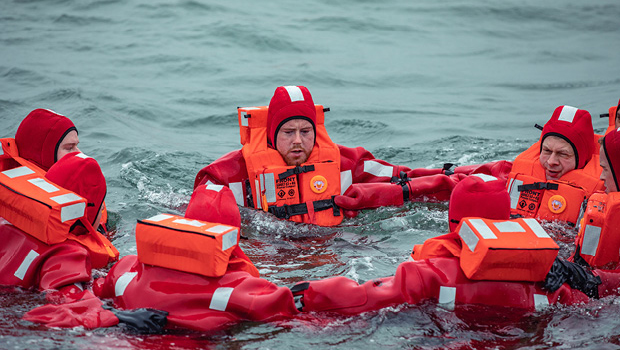Blog Post
Decoding Which Statement about Immersion Suits is True
Posted By: Harsh Bamnolia
Posted On : 20-Feb-2025

Decoding Which Statement about Immersion Suits is True
The question of which statement about immersion suits is true is crucial for understanding maritime safety. Immersion suits play a critical role in protecting seafarers from hypothermia and drowning in emergency situations.
These suits are designed according to stringent safety regulations and provide essential life-saving functions.
In this comprehensive guide, we will explore the truth about immersion suits, their features, benefits, compliance standards, and best practices for use and maintenance.
Immersion suits are one of the most important pieces of life-saving equipment carried onboard ships.
They are specifically designed for emergency situations where crew members might have to abandon the vessel.
These suits provide a protective barrier between the body and the freezing water, helping individuals survive until rescue arrives.
Which Statement about Immersion Suits is True?
There are several misconceptions and misunderstandings about immersion suits. Below, we clarify key facts:
Immersion suits are designed to prevent hypothermia – TRUE. These suits are made from neoprene or similar insulating materials that help retain body heat and prevent rapid temperature loss in cold water.
Immersion suits are the same as life jackets – FALSE. While immersion suits provide buoyancy, they offer additional protection against cold exposure, unlike regular life jackets.
All immersion suits must be SOLAS-approved – TRUE. The Safety of Life at Sea (SOLAS) Convention mandates that all vessels must carry SOLAS-compliant immersion suits for each crew member.
Immersion suits can only be used once – FALSE. Most high-quality immersion suits can be used multiple times if properly maintained and inspected.
Every immersion suit fits all body types – FALSE. Immersion suits come in different sizes, and it’s crucial to choose one that fits the wearer snugly to ensure maximum protection.
Immersion suits are difficult to wear – FALSE. Modern designs ensure quick donning, often within 60 seconds, making them user-friendly in emergency situations.
Immersion suits must be tested regularly – TRUE. Frequent inspections and maintenance ensure that they function correctly when needed.
Best Practices for Using an Immersion Suit
Proper Training: Crew members should undergo regular training on how to don and use immersion suits effectively.
Routine Inspections: Immersion suits should be checked for damage, wear and tear, and any faults that could affect performance.
Storage Conditions: Keep suits in designated areas, away from direct sunlight and chemicals that may degrade the material.
Seal Integrity: Ensure that zippers, seams, and fastenings are intact to prevent water leakage.
Quick Access: Suits should be stored in a way that allows for quick retrieval during emergencies.
Features and Compliance Standards of Immersion Suits
To meet international maritime safety requirements, immersion suits must adhere to the following features and regulations:
Material and Thermal Insulation:
Constructed from neoprene or waterproof material.
Designed to retain heat and reduce the risk of hypothermia.
Resistant to tears, punctures, and extreme temperatures.
Buoyancy and Flotation:
Built-in buoyancy, eliminating the need for a separate life jacket.
Capable of keeping the wearer afloat even in rough seas.
Provides additional floating support for weak or injured individuals.
Durability and Strength:
Resistant to oil, flame, and physical damage.
High-quality seams to prevent water ingress.
Withstands prolonged exposure to harsh marine environments.
Visibility and Identification:
Bright-colored material with reflective tape.
Equipped with a whistle for signaling.
Some models include an emergency light for night visibility.
Ease of Use and Mobility:
Flexible design for easy movement.
Zippers and seals for quick donning.
Some suits come with gloves and boots for full-body coverage.
Regulatory Approvals:
Must comply with SOLAS, IMO, and ISO standards.
Tested for thermal protection, buoyancy, and strength.
Must be approved for use by the relevant maritime authorities.
Conclusion
Now that we have decoded which statement about immersion suits is true, it is evident that these life-saving suits are indispensable for maritime safety.
Their ability to provide thermal protection, buoyancy, and regulatory compliance makes them a vital part of emergency preparedness at sea.
Choosing a high-quality, SOLAS-approved immersion suit is essential for ensuring the safety of crew members and passengers.
Marinetech Safety & Shipping Corporation offers SOLAS-compliant immersion suits that meet the highest safety standards.
Our products are built for durability, comfort, and maximum protection. Explore our range of life-saving equipment by visiting: https://marinetechss.com/supplies/life-saving-equipments.